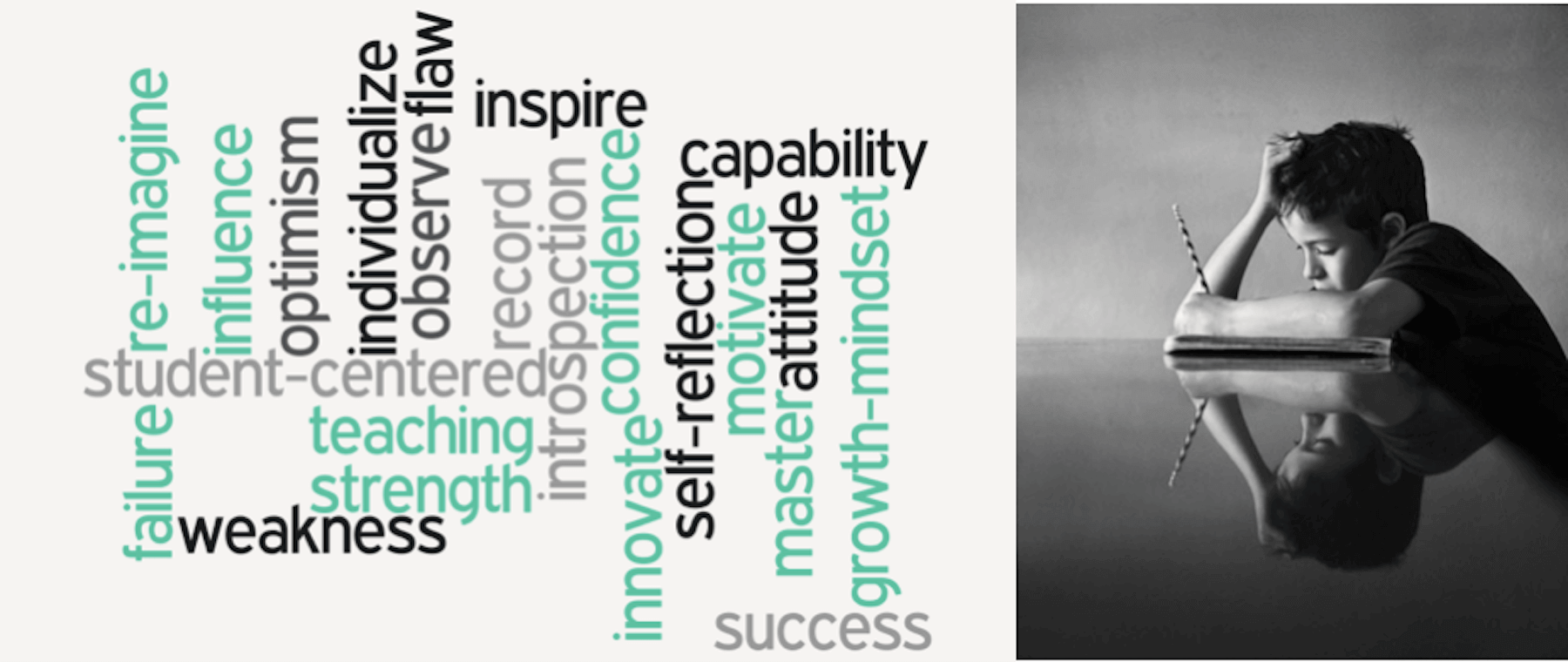
Self Reflection as Best Practice
It’s 3:30pm on a Tuesday. I’m sitting in gridlock traffic in Southwest Miami. It’s scorchingly hot outside and the sky has that hue of “impending doom gray” that signals it’s about time for the afternoon thunderstorm – similar to the thunderstorm churning in my mind. The lesson today didn’t pan out successfully. Half of Period 1 didn’t understand our exit ticket question and most students in Period 3 were extremely off task and didn’t even finish theirs. I’m wondering where it all went wrong. Was it in the design of my question or was the lesson itself haphazardly put together? Did I assume their prior knowledge of our selection? Was the exit ticket question not scaffolded appropriately? Is that why so many students in Period 1 seemed lost? And how did I interact with students in Period 3 today? Did I maintain my composure or was the frustration in my face and voice so apparent they just milked it and goofed off? Which point in the lesson did they drop off? Ugh, now I’ll have to regroup and redeliver this lesson on Thursday…
What you just read were the inner musings of a 9th grade Language Arts teacher – that teacher used to be me. It wasn’t uncommon for me to contemplate my day on my commute home – what worked, what didn’t, and after the “battle” in my mind was over, I’d get home and seek ways to better my practice, my instruction, and most importantly: my attitude in the classroom. As I think back on the rollercoaster of emotions I experienced then, I realize now more than ever that self reflection is a more powerful tool than any piece of feedback I’d ever received from a coach or administrator’s snapshot of my class. Was it enough, though?
The importance of self-reflection cannot be understated; it’s what gives us the power to affect change – both in our lives and in the lives of those we influence.
Reflection has come a long way since teacher diaries and peer observation. The importance of self-reflection cannot be understated; it’s what gives us the power to affect change – both in our lives and in the lives of those we influence. And when it comes to our students, they deserve an influencer who owns their flaws, acknowledges their weaknesses, and actively finds ways to improve their practice every day.
Formulaic discussions around lesson design with your colleagues and coach aren’t as helpful as you think if you’re not inwardly reflective. In a meeting with their department, the novice reflector may share that one group of students earned a poor grade on the last exit ticket a few days prior. After a brief team discussion exploring the reasons why (discussions on everything from question design to the resources used to practice the skill) the novice will then make an adjustment to the lesson based on cookie-cutter ‘best practices’ shared by the coach. But the novice discounted a particularly crucial moment from that day: before they delivered this lesson to this particular group of students, they had just gotten off a stressful phone call with a loved one; therefore, they lacked focus and delivered a presentation to the group that was hasty and uninspiring. The lesson itself probably didn’t need to be changed, as it had gone well in other class periods, but the students in this period had trouble staying on task when they could sense their teacher had other things on their mind.
It’s not always natural to consider your attitudes and habits as key ingredients in your recipe for success. Take baby steps and begin asking yourself every day: What went well today and why? What could have gone better and why? What do I want to remember for the future? Don’t be afraid to admit to yourself when most of the lesson crashed and burned, but by that same admission, don’t forget to applaud yourself on at least one strong moment. These introspective moments are what define stellar self reflectors.
Finally, even when you’re a master at your craft and you actively reflect on your lessons and classroom environment, it’s still a challenge to manage every student’s progress. Each student is unique not only in their academic ability but in their emotional and behavioral health. You could design a lesson that is both rigorous and scaffolded to meet the varying academic needs of your learners but completely miss the mark in engaging all of your students in a meaningful way. The problem? Maybe you’re not able to see and hear individual students every time you meet. Or maybe the problem is you’re not really seeing yourself.
This brings me back to my earlier question: Is it enough to be superbly self-reflective? Allow me to combine my answer here with the reason why I’m so stoked about Swivl. I’ve had some experience reflecting on video observations in my classroom, but never in the capacity Swivl provides – 360 views, crisp and clear audio, and the ability to see and hear every student, every time. If I had the opportunity to take a closer look at my Tuesday “mishap” on Swivl Cloud, I would have seen and heard every student in Period 1 and maybe I’d discover that redelivering the lesson wasn’t needed; I just needed to format the question differently for certain students. I’d also find out exactly at which point during Period 3’s lesson my students dropped off so I wouldn’t have to deliver the exact same lesson the next time we met. As a member of the Customer Success here at Swivl I can’t wait to share more of my failures and flops from my classroom with you, but I’ll also recount some moments of pure joy. Together, with a little help from Swivl, we’ll partner to define your journey in self-reflection!

Rachel Ashworth is a member of Swivl’s Customer Success Team and a former Language Arts and Speech and Debate teacher with Teach for America, Miami-Dade. When she’s not training our customers how to “Swivl,” she is cuddling with her two boxers or rejecting everything her husband suggests for dinner.